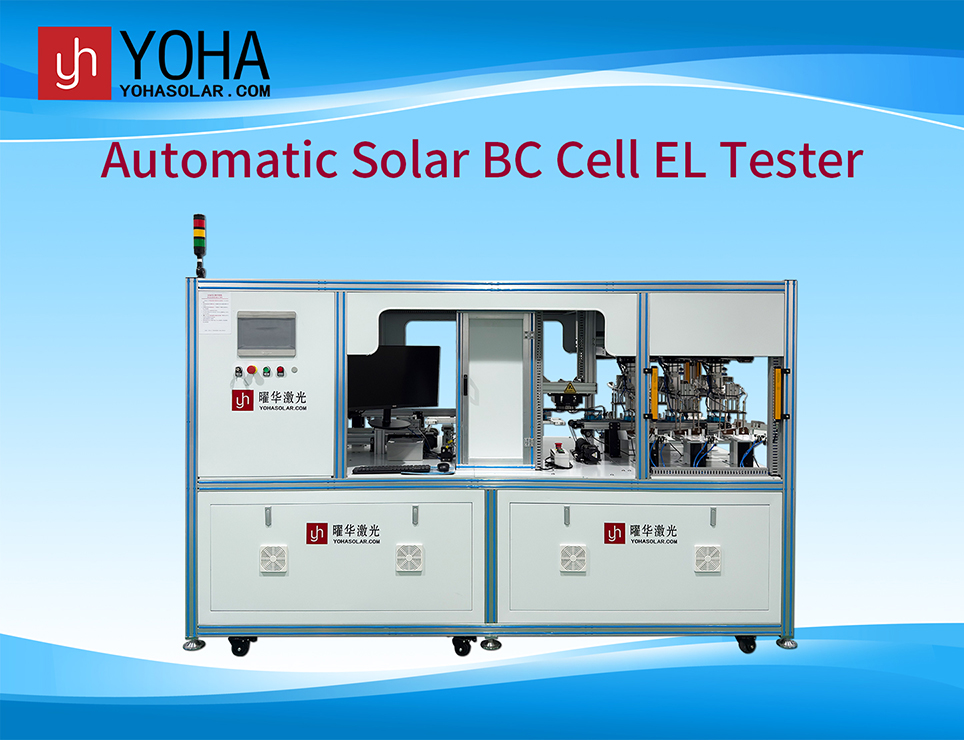Welcome to Wuhan Yoha Solar Technology Co., Ltd!
common problem
Site Map
Language:
 Chinese
Chinese
 English
English
Welcome to Wuhan Yoha Solar Technology Co., Ltd!
common problem
Site Map
Language:
 Chinese
Chinese
 English
English
In the development of the photovoltaic industry, module performance testing is a crucial link in ensuring product quality and system efficiency. As a core testing equipment, the load simulation technology of the PV module IV tester directly determines the accuracy and reliability of the tests. This article will delve into the load simulation technology of PV module IV testers, analyzing its principles, types, and application value, to help industry professionals better understand the importance of this technology.
Basic Principles of Load Simulation Technology
Load simulation technology is one of the core functions of a PV module IV tester. Its main purpose is to simulate the electrical load of a PV module under different operating conditions to measure its current-voltage (IV) characteristic curve. By simulating load variations encountered in actual operation, the tester can accurately capture key parameters of the module, such as the maximum power point, open-circuit voltage, and short-circuit current. The fundamental principle of load simulation involves using an electronic load or a variable resistance circuit to dynamically adjust the load impedance, causing the module to experience various operating states from short circuit to open circuit during testing. This simulation not only covers the standard test conditions for the module but can also replicate performance under complex environmental conditions such as changes in temperature and irradiance.
During the load simulation process, the tester records voltage and current values in real-time through a high-speed data acquisition system and plots the IV curve. This process relies on precise control algorithms to ensure the continuity and stability of load changes. Simultaneously, load simulation technology must also consider the dynamic response of the module in practical applications, such as abnormal conditions like partial shading and hot spot effects, to comprehensively evaluate the module's reliability and durability.

Types and Characteristics of Load Simulation Technology
Depending on the implementation method, load simulation technology can be divided into two main categories: passive load simulation and active load simulation. Passive load simulation typically uses fixed or variable resistor networks, switching the load state through mechanical or electronic switches. This method has a simple structure and low cost, but its response speed is slow, making it difficult to simulate rapidly changing load conditions. Furthermore, passive load simulation is prone to heat accumulation during high-temperature or high-current testing, affecting test accuracy.
Active load simulation is implemented based on semiconductor devices (such as MOSFETs or IGBTs), dynamically controlling the load current through Pulse Width Modulation (PWM) or linear regulation techniques. This technology offers advantages such as fast response speed, high accuracy, and strong programmability, enabling the simulation of complex PV system operating scenarios. For example, under conditions simulating partial shading, the active load can quickly adjust the operating point to accurately capture the multi-peak IV characteristics of the module. Additionally, active load simulation also supports Maximum Power Point Tracking (MPPT) testing, helping to evaluate the energy output efficiency of the module in real-world environments.
Another advanced load simulation technology is digital load simulation, which combines high-speed Digital Signal Processors (DSP) and real-time control systems to achieve precise reproduction of load curves. Digital load simulation can not only simulate static loads but also generate dynamic load sequences to simulate the module's behavior under extreme conditions such as grid fluctuations and sudden load changes. This technology provides a more comprehensive testing platform for the research, development, and certification of PV modules.
Key Parameters and Performance Indicators of Load Simulation Technology
The performance of load simulation technology directly affects the reliability of IV test results. Among these, the load adjustment range is an important parameter that determines the range of operating voltages and currents the tester can simulate for the module. Typically, high-performance testers support continuous adjustment from zero to the rated values of the module, covering PV modules of various specifications. Load accuracy reflects the consistency between the simulated load and the set value, usually expressed as a percentage or an absolute value. High-precision load simulation can significantly reduce test errors, ensuring the true reflection of module parameters.
Response time is another key indicator, especially important in dynamic testing. Fast load switching capability enables the tester to capture the module's performance changes under transient conditions, such as current surges during startup or voltage drift during sudden temperature changes. Furthermore, the linearity and stability of the load simulation technology cannot be overlooked. Linearity determines the proportional relationship between load changes and electrical parameters, while stability ensures the persistent consistency of the load point during prolonged testing.
Application Value of Load Simulation Technology in PV Testing
Load simulation technology is used not only in factory testing of modules but also plays a significant role in R&D, certification, and system optimization. In the R&D phase, by simulating different irradiance and temperature conditions, engineers can evaluate the performance of new materials and optimize the module's structural design. In certification testing, load simulation technology helps verify whether modules comply with international standards (such as IEC 61215, IEC 61730), ensuring their safety and reliability.
In PV system design, load simulation technology can be used to predict the actual power generation of modules. By simulating local climate conditions and load demands, the tester can generate annual power generation curves for the modules, providing data support for system sizing and economic benefit analysis. Furthermore, load simulation technology also aids in diagnosing module faults, for example, by simulating partial load conditions to identify performance degradation caused by hot spots or micro-cracks.
Future Development Trends of Load Simulation Technology
As PV technology advances towards higher efficiency and intelligence, load simulation technology is also continuously improving. In the future, load simulation will place greater emphasis on multi-physics field coupling simulation, for instance, combining thermodynamic and optical models to more realistically replicate the module's behavior in outdoor environments. The introduction of artificial intelligence technology will also enhance the intelligence level of load simulation, automatically optimizing test procedures through machine learning algorithms to improve testing efficiency.
On the other hand, load simulation technology is developing towards higher integration and modularity. New-generation testers will integrate load simulation with other testing functions (such as EL detection, spectral response testing) into a single unit, enabling one-stop performance evaluation. Modular design allows the tester to flexibly adapt to modules of different power and voltage levels, meeting diverse market demands.
Conclusion
The load simulation technology of PV module IV testers is a core means of ensuring the accurate evaluation of module performance. Evolving from passive loads to active digital loads, this technology continuously advances, providing more accurate and efficient testing solutions for the photovoltaic industry. In the future, with the expansion of PV application scenarios, load simulation technology will continue to deepen its simulation capabilities, supporting the high-quality development of the photovoltaic industry. As a manufacturer of photovoltaic equipment, we are always committed to technological innovation, providing customers with reliable testing products and services.
keywords:TOP
18086473422
MESSAGE
